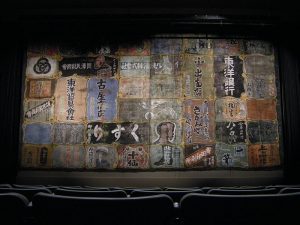Consider these three sentences, which appear in rapid succession in Shirin Nezamafi’s “Shiroi kami”:
海よ、開け!
口を大きく開け、肺いっぱい分の酸素を吸い込んだ。
開いている本を棒読みしている。
The verbs 開く and 開ける can be read as either aku or hiraku and akeru or hirakeru, respectively. How do you know which reading is correct?
The first thing to consider is whether the verb is transitive or intransitive. In the first and third sentences above, the verbs are intransitive; in the second, it is transitive. If the verb is transitive, it will almost certainly be akeru or hiraku. If the verb is transitive, then, the portion of the verb represented by the okurigana (-keru or –ku) will differentiate them. Therefore the verb in the second sentence is read ake.
If the verb is intransitive, things become more complicated. Aku, hiraku, and hirakeru can all be intransitive. If the verb is intransitive and the okurigana is –keru, then the verb is most likely read hirakeru.
Many things hiraku: those that open in three dimensions (blossoms, umbrellas, packages), those that open up and down (eyes, mouths, shells), those that open in any of a number of ways (books, windows, curtains), those that open in space (a divide), those that begin (meetings, lectures), those that are opened figuratively (new paths or lands).
The choice between aku and hiraku can be particularly tricky with doors. If there is a single door, then it will aku. If there are two doors that open away from one another, as a pair, then they hiraku. The first and third sentences are both hiraku because of the figurative sense of this sort of motion: the ocean parts to the two sides, and the book opens on the hinge of its spine.

Leave a Reply